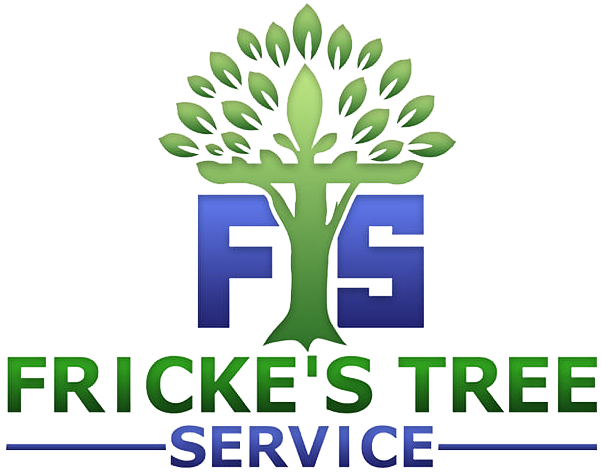Fricke's Tree Service
Is Your Tree Too Close for Comfort? Here's How to Know
How to Tell If a Tree Is Too Close to Your House
Understanding the Risks of Trees Near Your Home
Having trees in your yard can significantly enhance the beauty of your property, provide shade during hot summer days, and improve air quality by filtering pollutants. However, when trees are positioned too close to your house, they can pose significant risks that may lead to costly repairs and safety hazards. In this post, we will explore how to determine if a tree is too close to your home and what steps you can take to mitigate potential issues that may arise from their proximity.Signs That a Tree May Be Too Close
Identifying whether a tree is too close to your house involves observing several key signs that can indicate potential problems. Here are some important indicators to watch for:- Roots Intruding on Foundations: If you notice cracks in your foundation or uneven floors within your home, tree roots may be the culprit, causing structural instability.
- Overhanging Branches: Branches that extend over your roof can cause damage during storms or high winds, potentially leading to leaks or other issues.
- Excessive Leaf Litter: Trees that are too close can lead to clogged gutters and drainage issues, which can result in water damage to your home.
- Tree Leaning: A tree that leans towards your house may be at risk of falling, especially during severe weather conditions.
Assessing the Distance Between Trees and Your Home
Generally, a good rule of thumb is to maintain a distance of at least 15 to 20 feet between trees and your home. However, this can vary based on the type of tree and its mature size:- Small Trees: Should be planted at least 5 to 10 feet away from your home to avoid potential issues.
- Medium Trees: Require a distance of 10 to 15 feet to ensure they do not encroach on your property.
- Large Trees: Should be at least 15 to 20 feet away from your home to minimize risks associated with their size and root systems.
Potential Damage Caused by Trees
When trees are too close to your house, they can cause various types of damage that may lead to significant repair costs, including:- Structural Damage: Roots can undermine foundations, leading to costly repairs that can affect the integrity of your home.
- Roof Damage: Overhanging branches can scrape or puncture roofing materials, resulting in leaks and other issues.
- Water Damage: Clogged gutters from falling leaves can lead to water pooling around your foundation, increasing the risk of flooding and mold growth.
- Pest Infestations: Trees can attract pests that may find their way into your home, creating additional problems that require attention.
Evaluating Tree Health and Stability
It's essential to assess the health and stability of trees near your home to prevent potential hazards. Here are some critical factors to consider:- Tree Species: Some species are more prone to disease and structural failure, making them riskier to have close to your home.
- Signs of Decay: Look for dead branches, fungal growth, or hollow trunks, which can indicate that the tree is unhealthy.
- Root Health: Healthy roots should be firm and well-distributed; any signs of rot or damage are concerning and may require further investigation.
Consulting with Professionals
If you're unsure about the safety of a tree near your home, it's wise to consult with a certified arborist. They can provide expert advice on:- Tree health assessments to determine if the tree poses a risk.
- Pruning and maintenance recommendations to keep trees healthy and manageable.
- Removal options if necessary, ensuring that the process is safe and effective.
Preventive Measures to Take
To prevent potential issues with trees near your home, consider the following preventive measures that can help maintain safety and health:- Regular Inspections: Schedule annual inspections of trees close to your home to catch any potential problems early.
- Proper Pruning: Keep branches trimmed to avoid damage to your roof and siding, ensuring that trees remain healthy and manageable.
- Root Barriers: Install barriers to prevent roots from encroaching on your foundation, protecting your home from potential damage.
When to Remove a Tree
In some cases, removal may be the best option for ensuring the safety of your home and property. Consider removing a tree if:- It poses a significant risk to your home or property, especially during storms or high winds.
- It is dead or dying and cannot be saved, which can lead to further complications.
- Its roots are causing severe damage to your foundation, leading to costly repairs.
Conclusion
Maintaining a safe distance between trees and your home is crucial for protecting your property from potential damage. By being vigilant and proactive, you can enjoy the benefits of trees while minimizing risks associated with their proximity. If you suspect a tree is too close to your house, don't hesitate to reach out for professional help to assess the situation and take appropriate action. For more information or to request an estimate, please visit Frick's Tree Service , where you can find expert assistance for all your tree-related needs.SHARE POST
RECENT POSTS
Interested in Our Services?
Get in touch today to discuss your next project and we will happy to answer any questions and provide you with a no-obligation FREE Estimate.







